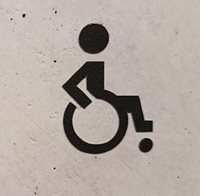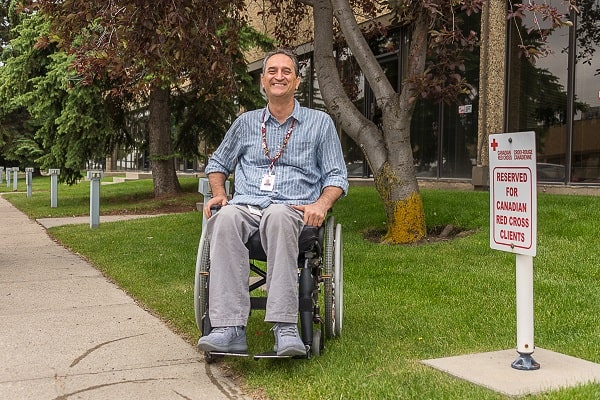 For people living with disabilities, preparing for disasters will need to take into account personal needs, such as mobility before, during and after a disaster – especially if there’s no power.
For people living with disabilities, preparing for disasters will need to take into account personal needs, such as mobility before, during and after a disaster – especially if there’s no power.It can be a challenge to prepare for disasters when living with disabilities but what does help to protect yourself and your family when a disaster happens is planning ahead.
Here are some tips for disaster planning when living with disabilities.
Emergency Plan
It’s important to involve any family members or personal supports with your emergency planning, especially if dependent on others. Discuss these ideas with your family, friends and/or your personal care attendant, or anyone else in your support network and prepare an emergency plan.
- Ensure your emergency plan includes safe evacuation routes (see below for evacuation plan).
- Post the plan where everyone will see it, keep a copy with you and make sure everyone involved in your plan has a copy.
- Have a primary and back-up emergency contact.
- Create an evacuation plan. Make sure there is no furniture in the way. If you live in an apartment building, talk to the building manager. If your building has an elevator, make sure you have an alternative way to get out.
- Contact your local municipal office to ensure that the shelters in your area would be wheelchair accessible.
Emergency Kit
Everyone putting together a preparedness kit should personalize it for their specific needs. This could be anything from including prescription medications to including an extra pair of eyeglasses.
If you are mobility impaired, there are certain items you should include in your personal preparedness kit.
Things to have ready if you are in a wheelchair:
- Tire patch kit
- Can of seal-in-air product (to repair flat tires on your wheelchair or scooter)
- Supply of inner tubes
- Pair of heavy gloves (to protect your hands while wheeling over glass or other sharp debris).
- Spare deep-cycle battery for a motorized wheelchair or scooter.
- A lightweight, manual wheelchair as a backup to a motorized wheelchair.
 Mahmood Jafari, a Red Cross staff member who works with our Health Equipment Loan program, suffered a serious injury in Iran that left him in a wheelchair. As a member of the Red Cross family and a former soldier, Mahmood knows how important it is to take the time to be ready in case there is an emergency. “The most important part of my emergency plan is to be prepared for any scenario,” Mahmood says. “This includes being stuck in my apartment for an extended period. I have back-up medications. I have back-ups for everything. It’s very hard to get medical supplies or equipment during an emergency.” He also recommends writing everything down in case your cell phone dies (passport number, prescriptions, emergency contacts).
Mahmood Jafari, a Red Cross staff member who works with our Health Equipment Loan program, suffered a serious injury in Iran that left him in a wheelchair. As a member of the Red Cross family and a former soldier, Mahmood knows how important it is to take the time to be ready in case there is an emergency. “The most important part of my emergency plan is to be prepared for any scenario,” Mahmood says. “This includes being stuck in my apartment for an extended period. I have back-up medications. I have back-ups for everything. It’s very hard to get medical supplies or equipment during an emergency.” He also recommends writing everything down in case your cell phone dies (passport number, prescriptions, emergency contacts).
Our friends from American Red Cross put together this checklist on what to do before a disaster:
- Learn what to do in case of power outages and personal injuries. Know how to connect and start a back-up power supply for essential medical equipment.
- If you use an electric wheelchair or scooter, have a manual wheelchair for backup.
- Teach those who may need to assist you in an emergency how to operate necessary equipment. Also, label equipment and attach laminated instructions for equipment use.
- Store back-up equipment (mobility, medical, etc.) at your neighbor’s home, school, or your workplace.
- Arrange for more than one person from your personal support network to check on you in an emergency, so there is at least one back-up if the primary person you rely on cannot.
- If you are vision impaired, deaf or hard of hearing, plan ahead for someone to convey essential emergency information to you if you are unable to use the TV or radio.
- If you use a personal care attendant obtained from an agency, check to see if the agency has special provisions for emergencies (e.g., providing services at another location should an evacuation be ordered).
- If you live in an apartment, ask the management to identify and mark accessible exits and access to all areas designated for emergency shelter or safe rooms. Ask about plans for alerting and evacuating those with sensory disabilities.
Related stories:

